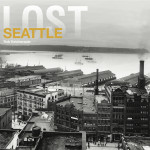Name:
福吉坂 ふくよしざか
Fukuyoshi-zaka, Fukuyoshi Rise
Location:
赤坂2丁目17番地と18番地、19番地や20番地の間。
Between Akasaka 2-17 and 2-18, 19, and 20.
This article is part of the special feature Akasaka on the Rise. Check it out in my Live Maps Collection.
The official description:
.jpg)
Officially, this rise doesn't exist. The only mention I can find of it is on the web page for Suzuki Mikawa Sake Shop. Here's what they have to say:
(弊社の通りの坂をいいます。)福岡藩と人吉藩の屋敷町が由来の福吉町の町名からきています。昭和40年代の町名整理でなくなりましたが、坂の名は残りました。
(The rise in front of our shop.) The area was called Fukuyoshi-cho because it contained the residences of the lords of Fukuoka Domain and Hitoyoshi Domain. The neighborhood name disappeared in the 1970s in the nation-wide town reorganization, but continues on in the rise name.
Unofficial explanation:
Fukuoka Domain is now the west part of Fukuoka Prefecture. The middle estate of Fukuoka was in the middle of Akasaka 2-chome (港区赤坂2丁目), labeled Matsudaira Chikuzen (松平筑前) on the map. Chikuzen was the head of the Kurota family (黒田家, Kurota-ke) in 1858, and Lord of Fukuoka Domain.
Hitoyoshi Domain is Hitoyoshi City in Kumamoto Prefecture. The estate is labeled Sagara Family (相良家, Sagara-ke) on the map, indicating the lords of Hitoyoshi.
The name of the building at the top of the rise is Fukuyoshi Rise Building (福吉坂ビル, Fukuyoshi-zaka Biru), but otherwise the rise is not identifiable at this point. The neighborhood was labeled as Fukuyoshi District (福吉町, Fukuyoshi-chou) in an 1892 map of Tokyo.
The large Fukuoka middle estate has been filled in with a collection of small buildings on top of the hill, and mammoth structures at the bottom towards Roppongi Avenue including Akasaka Twin Towers and Akasaka Tameike Tower. The trend is ending though, with the construction of two residential towers on the top. One of them, fittingly named Akasaka Top of the Hill, will be a high-end condominium building. The other is public housing. It's called the Lower House Akasaka Residences (衆議院赤坂宿舎, Shuugiin Akasaka Shukusha), built to house National Diet members in the city. The Diet building (国会議事堂, Kokkaigijidou) is within a short walk to the east, so they voted to build themselves a place to take a nap during the day - they all have real homes out in the suburbs, as well as real real homes back in their home districts. The total price is budgeted at 33,400,000,000 yen (rough estimate gives you 334 million dollars). They're paying 90,000 yen a month in rent. There are 300 units. Must be nice to live in a 1.5 million dollar home for $900 a month!
.jpg) At the bottom of the hill is one of the few businesses that retain the name Fukuyoshi, though it didn't open until after the redistricting, in 1984. The sign says "Spirit Mountain Kannon - Fukuyoshi Protector of Lost Children" (福吉水子地蔵尊ー霊山観音, Fukuyoshi Mizuko Jizooson - Reisan Kannon). This is a branch of Kyoto's Koutai Temple (高台寺, Koutaiji), which houses a large effigy of the god Kannon known as Spirit Mountain Kannon. This branch is the only Tokyo-based specialist in services for deceased infants, who traditionally were believed to be cursed by a spirit (水子, mizuko), which needed to be exorcised. In the past this was common for still-births and other deaths during pregnancy, and would be done for infants and very small children as well. Since the 1950s it has become most common for abortions, as they have grown in number. If you go to a temple in Japan and see a small stone figure with cute clothing or a toy on it, don't laugh and point and take pictures. It represents the loss of a child, for whatever reason, and the heartache of the parents.
At the bottom of the hill is one of the few businesses that retain the name Fukuyoshi, though it didn't open until after the redistricting, in 1984. The sign says "Spirit Mountain Kannon - Fukuyoshi Protector of Lost Children" (福吉水子地蔵尊ー霊山観音, Fukuyoshi Mizuko Jizooson - Reisan Kannon). This is a branch of Kyoto's Koutai Temple (高台寺, Koutaiji), which houses a large effigy of the god Kannon known as Spirit Mountain Kannon. This branch is the only Tokyo-based specialist in services for deceased infants, who traditionally were believed to be cursed by a spirit (水子, mizuko), which needed to be exorcised. In the past this was common for still-births and other deaths during pregnancy, and would be done for infants and very small children as well. Since the 1950s it has become most common for abortions, as they have grown in number. If you go to a temple in Japan and see a small stone figure with cute clothing or a toy on it, don't laugh and point and take pictures. It represents the loss of a child, for whatever reason, and the heartache of the parents.
